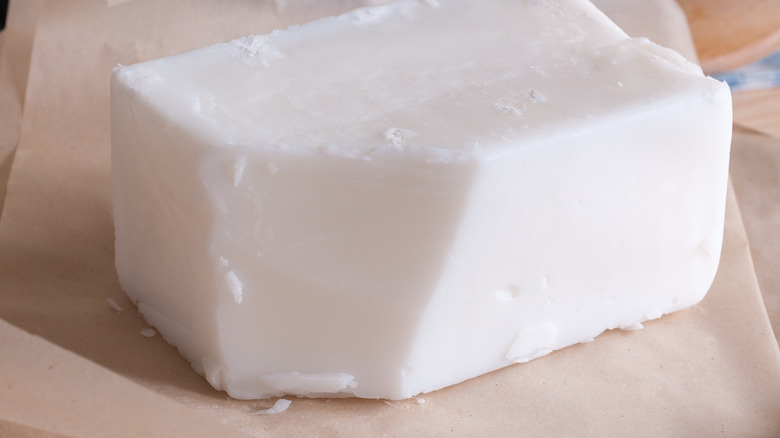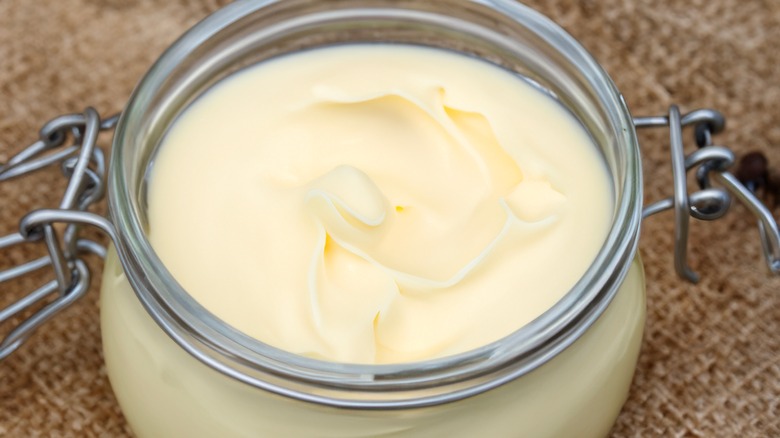The Best Way To Store Beef Tallow And Keep It Fresh
There are so many reasons to love beef tallow. It can be used in many different ways, from making candles and cosmetics to soaps and skincare, and that's before you consider its myriad uses in the kitchen. You can elevate the flavor of your breakfast eggs by frying them in beef tallow, use it to amp up the taste of frozen French fries and popcorn, and as a secret ingredient for a more flavorful pot pie.
Beef tallow is also really easy to make yourself — all you need is some beef fat (cut from some restaurant steak scraps perhaps), a pan, a bit of water, and some patience to render the beef fat into beef tallow. You can even buy beef tallow pre-made. Given its usefulness, you'll want to keep some on hand. We spoke to celebrity chef David Burke who will be a part of this year's Flavors of the Open presented by DOBEL for his top tips for storing beef tallow. "Stored in an airtight container at room temperature, in a cool, dark place is the way to go," Burke says. "That way it has a shelf life of about a year and because it's in its oil state at room temperature, it's easy to use ... as opposed to when it's in its solid state, which would be the case if it's refrigerated."
Extending the shelf life of beef tallow
Try using a mason jar or Tupperware to store your beef tallow, and make sure the container is completely dry before adding the tallow. Add a label with a date so you know when the it expires. Be sure to store your tallow away from sunlight, too much air, and maintain a temperature under 72 degrees Fahrenheit to maximize its shelf life — avoid storing it in a cabinet above your stove as it would be subject to too many fluctuations in both moisture and heat. Beef tallow can be stored in the fridge and even the freezer to further extend its shelf life, but it will turn solid in that case and, as David Burke explained to us, be a little tougher to work.
And while beef tallow, when stored properly, does have a fairly long shelf life, it doesn't last forever, and it's important to know the signs of spoilage. These indicators include changes in color, smell, flavor, and texture — if the beef tallow smells rancid or off, has a sour taste, or becomes discolored or shows signs of mold, chances are it's spoiled and should be thrown out.

